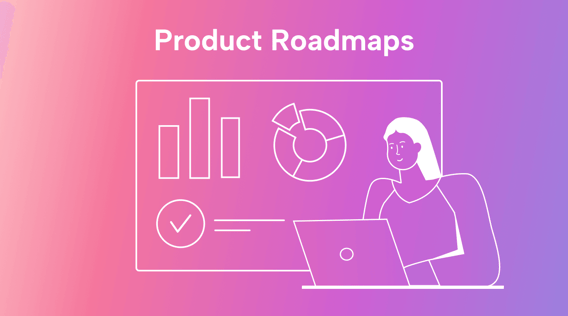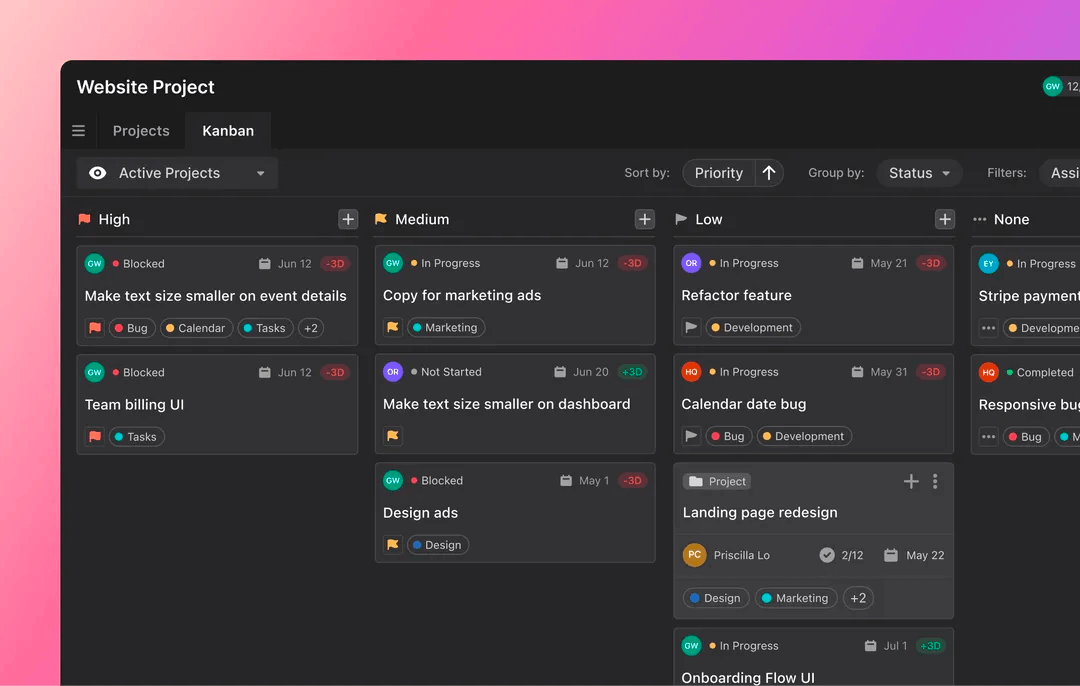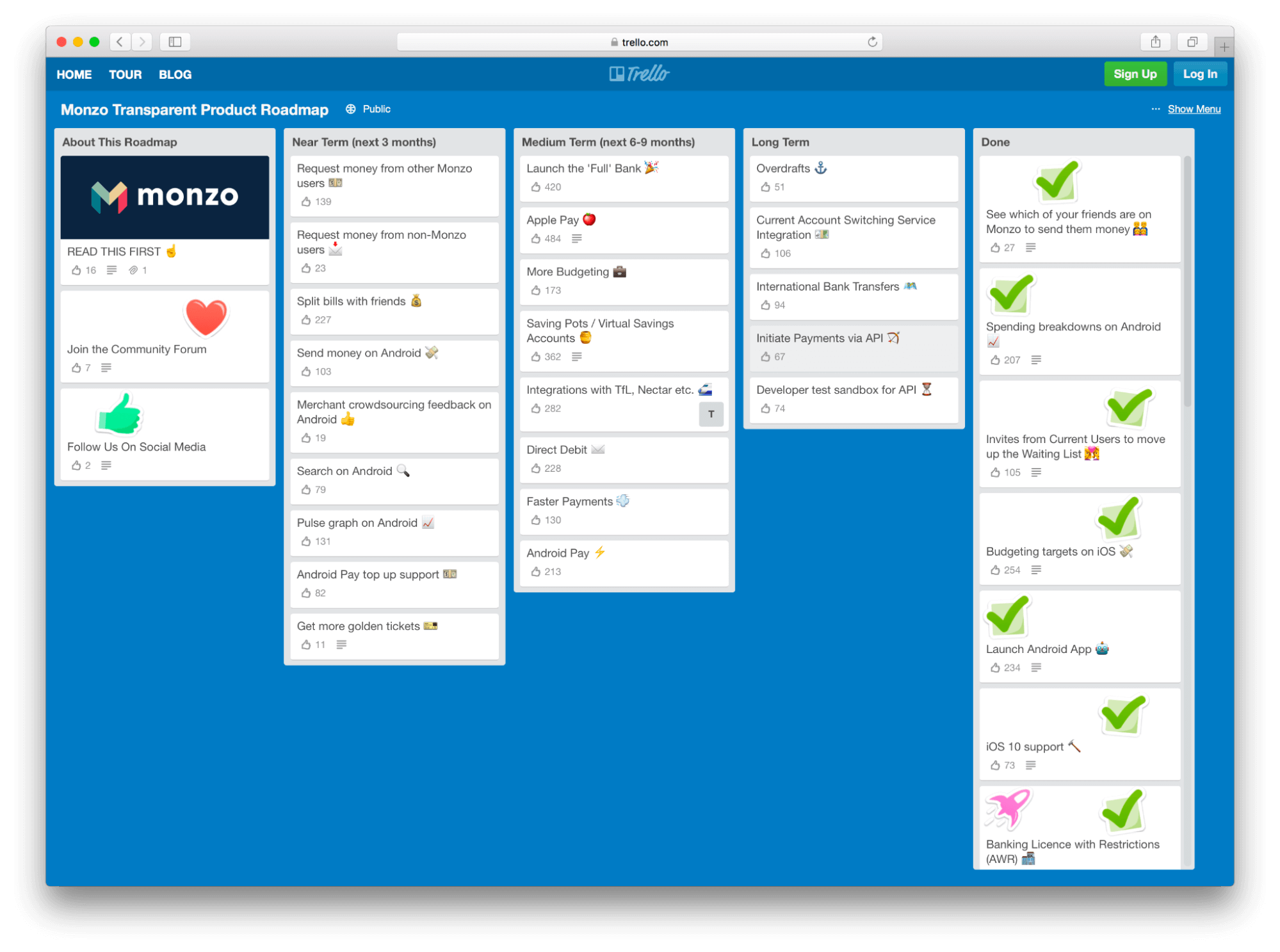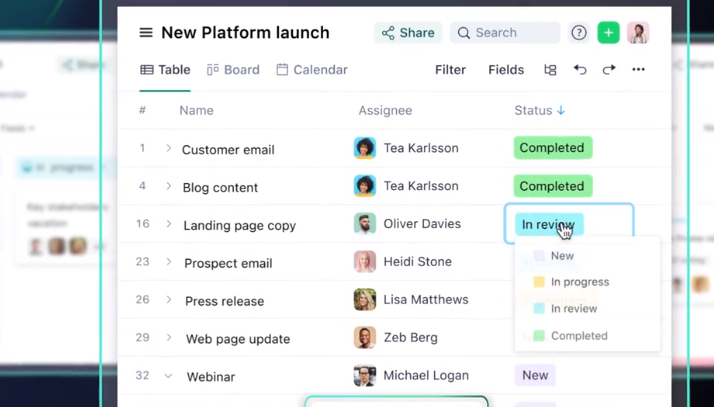Innovations are crucial to remaining relevant and competitive in a cut-throat market. Companies that quickly adapt and overcome a dynamic market thrive, while those that stagnate fall off. Therefore, you can't afford to take a chance with your product development process.
For instance, you notice declining sales of your project management solution. On further investigation, you identify three key customer complaints: lack of a mobile app, a so-so user interface, and limited integration with other software. Ideally, you need to fix these issues, but in what order? How do you prioritize these features and stem the bleeding?
A solid product roadmap lets you breeze through the product development phase and get your next product or service iteration ready for the market in record time. It also helps teams align around a shared vision, make informed decisions, and hit product development milestone.
But where do you even start?
Dig in as we explore the importance of a product roadmap, explain the role of product roadmap software, and provide insightful product roadmap examples.
What is a product roadmap?
A product roadmap is a strategic document outlining a product's high-level goals, visions, and priorities. It is a communication tool that unites teams and stakeholders around a common goal to help accelerate the ability to develop flawless products that meet and exceed customer expectations.
 |
How to create a product roadmap
Here are some steps to follow to come up with an effective product roadmap:
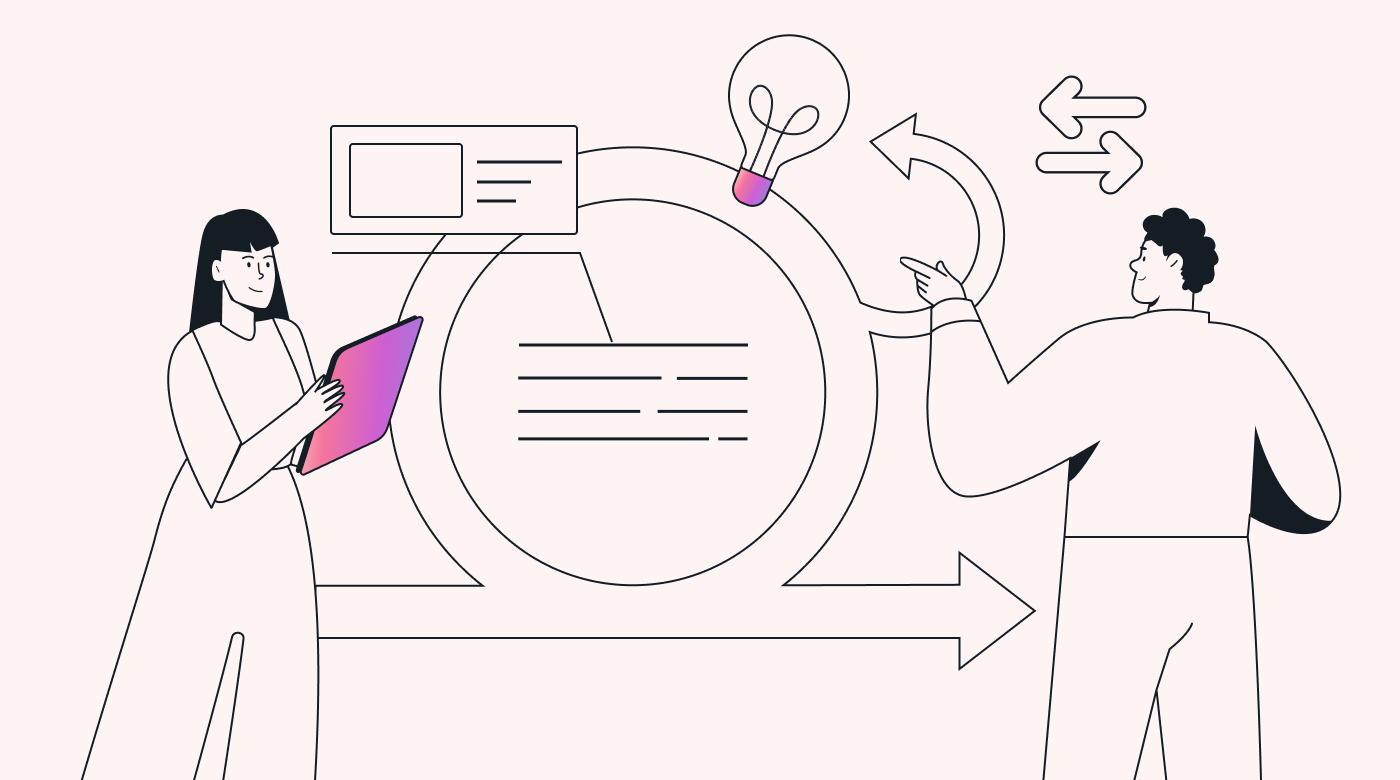 |
Formulating the product vision and strategy
Understanding your business model and how your product or service will support that business model is the fundamental first step in creating a good product roadmap. This means knowing why you are developing the product, how you will handle its attributes, and understanding the product's unique impacts on consumers.
Defining the audience
How your product roadmap looks depends on your target audience. Whether for management or development teams, the idea is that your roadmap should build confidence in your path to the ultimate objectives.
Choosing a format
Having a clear format helps guide the entire process of creating a roadmap. Using user feedback and company research, develop a format and specific features your team should focus on. For instance, if you notice convenience matters to customers, you may want to create a phase focusing on improving the user experience.
Tailoring the metrics
As the saying goes, what gets measured gets done. Metrics help you make objective decisions when the time comes. They are also vital for building stakeholder trust in the product or service you are building out. Make sure you have identified the right metrics to shape your path forward.
Nine types of product roadmap examples
The look and structure of product roadmaps vary between projects because each roadmap is tailored for a specific logic or to convey different data sets. Product road maps fall into two broad categories – linear and Agile.
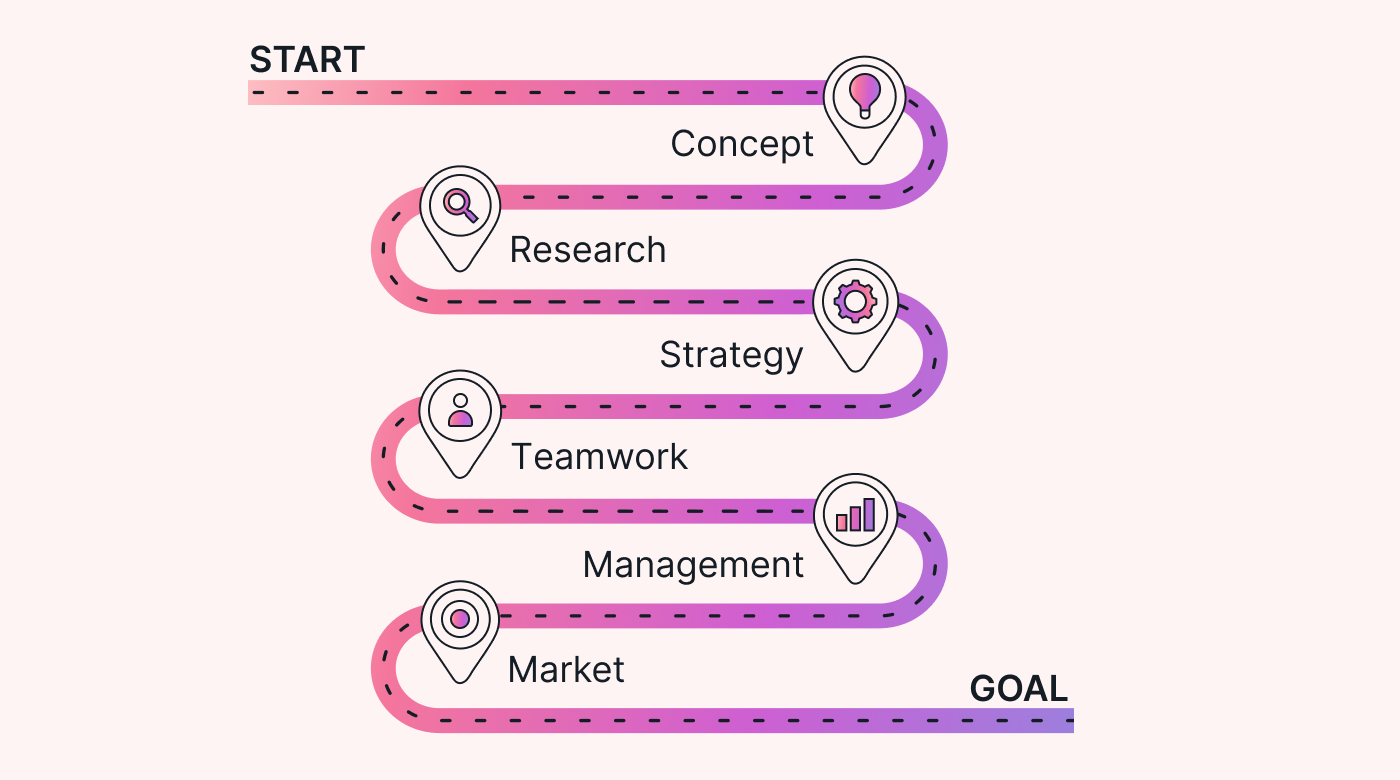 |
Here are 9 of the most common Agile roadmaps:
1. Now-next-later roadmap
This roadmap helps to communicate the priorities and timeframes of a project. It best fits fast-paced businesses with ever-evolving priorities. With now-next-later roadmaps, you can keep stakeholders informed of any fluctuating roadmap.
The 'now' focuses on what is being worked on. It helps the team identify all issues affecting the task and concentrate on its specific features.
The 'next' focuses on what will happen afterward. Here, you create an awareness of the product's priorities to your team and stakeholders.
The 'later' focuses on what may happen to the product in the future.
Example: Suppose you are developing software:
- Your 'now' will be to set a framework of what you want to achieve based on your research on what your customers want and market validation.
- Next, you will outline the fundamentals guiding the sales team when launching the product.
- Later, you want to focus on any software changes needed. For instance, a future security update.
2. Goal-oriented roadmap
The goal-oriented roadmap is used to create goals for your product or service, plan its release, and harmonize the launch of other, related products or services. In other words, the goal-oriented roadmap outlines your product's objectives for a particular duration.
Example: Suppose you are a mobile app developer aiming to create an app promoting remote workers' productivity. In your roadmap, you might include various phases, such as:
- Research: This includes conducting market research while identifying your target audience and their needs. You may use interviews to get feedback on the features they need from the app. You may also analyze a competitor's app to identify the existing discrepancies.
- Planning: Here you will outline the app's essential features and prioritize them based on the customer's needs, and then create a plan for the app's development. For instance, you migh prioritize resource allocation over specific features like revenue tracking.
- Development: This could include establishing a development environment, programming, conducting regular code reviews and testing to ensure quality.
3. Theme-based roadmap
This roadmap allows the product team to classify their goals into strategic themes. Theme-based roadmaps help to identify potential problems you might encounter and the timeframe required to solve them. This roadmap is essential for promoting team effectiveness and decision-making and limiting repeated explanations.
Example: If you want to develop software, you may come up with three themes; enhanced task management, improved collaboration, and rationalized reporting. Here's what your themes might look like:
- Theme 1: Enhanced task management. The objective is to help users to link tasks together and keep track of project timelines based on importance and urgency. The initiative could include conducting research and gathering feedback about existing software, and note areas of improvement
- Theme 2: Improved Collaboration. The objective is to promote collaboration amongst teams when completing the assigned tasks. The initiatives could be team interviews and observing for collaboration.
- Theme 3: Rationalized reporting. The objective is to tailor the project metrics and visualizations. The initiatives could include examining user feedback and establishing usability tests to identify and optimize reporting workflows.
4. Feature-based roadmap
Feature-based roadmaps track against the development and release of significant features of a product. Instead of focusing on the product features' outcome, this roadmap focuses on their development. This roadmap visualizes the evolution of a product or service and identifies features needed in the future.
Example: Suppose you want to develop an e-commerce platform, and your goal is to improve the user experience. You may identify features such as:
- An authentication feature that allows users to register and signup with the platform.
- A payment functionality where users can pay for the products using options like credit cards or Paypal.
- A reviews and rating section where users can give feedback on their experience using the platform.
5. Strategic roadmap
A strategic roadmap describes the product's vision and guides the direction for the entire project. It provides the what, why, and how of the project.
Example: In a mobile application development company focused on developing a user-friendly mobile app, teams may use the strategic roadmap to describe how they intend to achieve their goals. For instance, they may:
- Get feedback from the target audience on what they would like to see.
- Analyze an existing competitor's app to identify what critical functionality might be missing.
- Create a user testing approach, scripts and metrics.
6. IT roadmap
A technology roadmap describes your technology strategy for the product or service you are creating, including development processes, architecture, and infrastructure.
Example: If you want to develop project management software, you would use the IT roadmap to plot out:
- Setting up cloud-based servers and creating reliable storage options.
- Developing core features, such as task creation, sharing, and progress tracking.
- Expanding the tool’s capabilities or improving existing features.
7. Portfolio roadmap
Portfolio roadmaps describe your overall product plans and timelines so stakeholders can understand how each relates to the goals that have been set. A portfolio roadmap can also visualize what investments need to be made in a product or service in a given timeframe.
Example: If you run a technology company offering various products and services, here's what a 3-year portfolio roadmap could look like:
- Year 1: Solidify major offerings. Incorporate your product with new features that align with the market trends and consumers' feedback. Carry out market analysis to establish potential gaps in the offerings.
- Year 2: Expand into the Market. Introduce a new product in the market to increase revenue channels. Start partnerships with industry leaders to increase the client base and create a marketing plan for your existing products.
- Year 3: Evaluate for emerging technologies. Identify emerging technologies and evaluate their potential for new products. Promote innovation among employees to create products that align with the new technologies.
8. Release roadmap
Release roadmaps outline when features, advancements, and fixes to your product or service will happen, usually in predefined release cycles.
Example: For that project management tool, you may decide to schedule these new features in upcoming release cycles:
- User authentication and authorization
- Advanced assignment prediction
- Progress tracking and feedback loops.
9. Marketing roadmap
The marketing roadmap outlines marketing strategies needed to get your product or service out into the market (and adopted by customers.)
Example: You may develop various marketing strategies if you're working on a specific mobile application. For instance, you may decide to:
- Have a 2-month pre-launch preparation, where you create awareness among your target customers.
- Launch the app in the 3rd month and get initial feedback from users.
- Set aside one month to campaign for app download using ads and influencers.
It is important to note that you can have more than one product roadmap (or combine some) for your product or service. This really depends on the product or service itself, the audience, customers and your way of working.
How to choose a product roadmap software
To make life easier when developing a roadmap, consider using software. But note that the best product roadmap software depends on your business goals, budget, team, and work environment.
 |
When choosing product roadmap software, you should consider the following.
Available features
Consider a roadmap tool that fits how you and your team work. For instance, does the team require editing, feedback, and sharing software? It also helps to choose a tool that integrates, or, at least, aligns with your current platforms.
Ease of use
Look for software with user-friendly functionality and that allows your team to easily create, update, and share your product roadmaps. Customizable workflows will let you tailor the software even more precisely.
Integration
How well does the software integrate with existing tools? Choose software that connects with your other essential tools, like project management, collaboration, and communication applications.
Cost
Obviously pricing is important. You’ll want to make sure the software you are choosing is within the budget. Look for software with free trials and non-binding contracts.
Customer support
How reliable is the support team? How long do they take to respond to inquiries? Consider only software whose support offers reliable and timely responses to issues.
Top 3 tools to help you with a product roadmap
While there are many tools available to help you with your product roadmap, functionalities might differ drastically. The top three tools include:
1. Motion
Motion is a project planning tool that can help you build product roadmaps. It automatically creates a tailored schedule for your team, and you can view the progress of your tasks in a list or Kanban view. It also allows you to add attachments, notes, and comments to your projects and tasks and keep them in one place.
Motion is suitable for various industries, from IT providers and manufacturers to law firms and real estate agents.
2. Trello
Trello is a team collaboration tool that uses Kanban-style boards and swimlanes to describe a product’s progress. This tool gives teams a clear view of where a product stands in the lifecycle.
Users can attach notes, documents, and images to the boards and easily navigate the various stages of the product roadmap. Trello is a good option for scrum teams that favor the Kanban approach.
3. Wrike
Wrike is another tool that can help you create product roadmaps. It uses Gantt charts to optimize planning and Kanban boards to monitor progress. With Wrike, you can also use tags or custom fields to organize product development.
Additionally, Wrinkle has templates that allow you to prioritize tasks, track their progress, and modify your roadmap to a particular workflow.
Develop a successful product roadmap with Motion
Product roadmaps play a significant role in helping companies introduce new products or services. They can help you create a strategic plan on growing your product or service.
And by using AI to help you create your product roadmap, you can save valuable time while also boosting the accuracy and quality of your product roadmap.
If you are looking for a tool to help you create a great product roadmap, try Motion. With its AI calendar, task management, and meeting assistance features, the tool creates optimized schedules for all your tasks, meetings and projects to help you get everything done.

